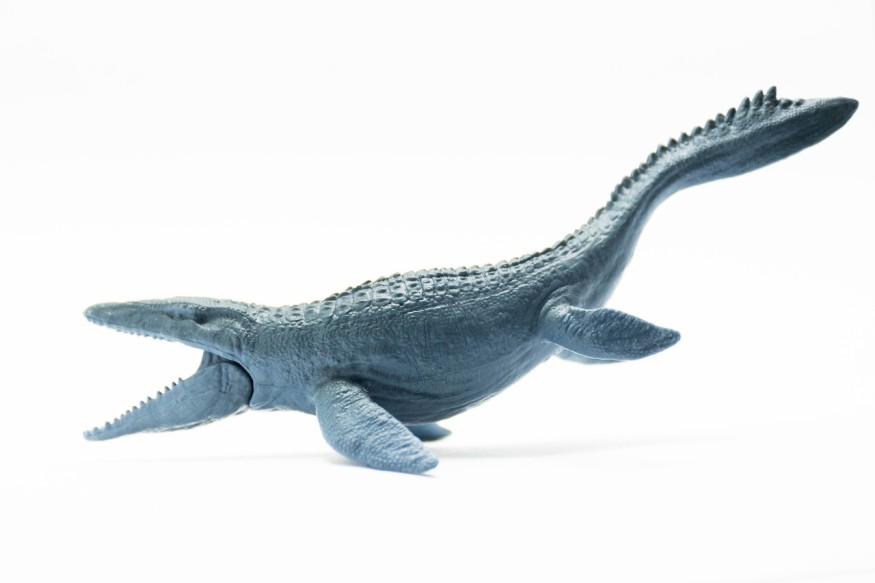The discovery of an ancient fish fossil treasure trove in southern China provides fresh insights into the evolution of jawed vertebrates, which make up 99 percent of all currently existing vertebrates on Earth, including humans.
The 439 million to 436 million-year-old fossil deposit has a surprising array of previously unknown tiny, toothy, bony fish species.
The studies led by Zhu Min, an academician at the Chinese Academy of Sciences (CAS), reported their findings in Nature on September 29. The diversity of the fossils at this particular location underscores the peculiarity that such a gap occurs in addition to filling a visible hole in the fossil record.
Ancient Fossil Shark in China Sheds Light on Human Evolution
The early Silurian fish fossils, unearthed during the past ten years by Zhu's team at the Institute of Vertebrate Paleontology and Paleoanthropology under the CAS, were found in southwest China's Chongqing Municipality and Guizhou Province, respectively.
The oldest known jawed vertebrates with teeth are among the five new species of ancient fish fossils, which the experts consider noteworthy.

The CAS explained in an article published on its WeChat account that life would be "unimaginable" without jaws.
"The origin of jaws may be the most important and profound evolutionary event in the evolution history of vertebrates," the CAS added per CGTN.
Zhu asserts that parts of the human body, including the jaw, eyes, nose, and mouth, are descended from fish.
"The new data allowed us to gain much needed information about the evolutionary steps leading to the origin of important vertebrate adaptations such as jaws, sensory systems, and paired appendages (limbs)," said Zhu CGTN report.
About Chinese Fossil Sharks
A little fish that the researchers have named Xiushanosteus mirabilis was discovered in about 20 different specimens at the Chongqing site. These discoveries make the creature the fish species that are most prevalent in the fossil assemblage.
The paper clip-sized X. mirabilis was only around 30 millimeters long, yet it resembled future, bigger armored placoderms strikingly: It possessed a body coated in tiny, diamond-shaped scales and a large, bony skull shield.
Science News said the unusually high number of these fish at a site from the early Silurian Period might result from favorable fossilization conditions. The small, delicate bones of X. mirabilis and the other jawed fishes would be more difficult to preserve than the larger jawless specimens of the time or the more robust toothy bony fishes of the later Devonian Period. Another idea, however, is that this location was a unique anomaly in its era and that the placoderms just so happened to be drawn to it.
The Chinese site provides insight into the evolution of body traits from jawless to jawed species, in addition to ancient jawed fish. Tujiaaspis vividus, a newly found jawless animal, is revealed to be closely linked to the galeaspid family of jawed fish.
The well-preserved fossils of T. vividus provide a fresh opportunity to understand how the fin arrangements of its jawed ancestors evolved, a transition for which there is few prior evidence.
This is due to the fact that galeaspids have characteristic head shields, but until now, researchers haven't been able to look within these preserved shields to examine the internal anatomy.
About Guizhou Repository
Zhu also told the Global Times that the excavation effort produces amazing resources. Similar to the Chengjiang and Jehol biotas, the Chongqing Lagerstätte will become a renowned paleontological heritage site and offer crucial proof for the evolution of the great diversity of jawed vertebrates we witness today."
The Guizhou repository, 439 million years old, comprises layers of silt from the far-off Silurian Period, which lasted from around 445 million years ago to 420 million years ago. It has provided amazing fossil discoveries, such as isolated teeth from a new species of primitive jawed animals called Qianodus duplicis.
Named after the prehistoric name for Guizhou, Qianodus has unusual spiral-shaped dental parts with successive generations of teeth added throughout the animal's lifetime. It is now known that toothed vertebrates and shark-like dentition patterning existed 14 million years earlier than previously believed because of the finding of Qianodus.
Paleontologists researching the origins and early diversification of vertebrates have shown a keen interest in Silurian vertebrate locations in Guizhou and those outside of China.
Check out more news and information on Archaeology in Science Times.
© 2025 ScienceTimes.com All rights reserved. Do not reproduce without permission. The window to the world of Science Times.










